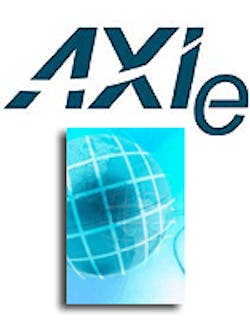Does the world really need another modular test standard? Ready or not, here comes AdvancedTCA Extensions for Instrumentation and Test (AXIe). Proposed by the trio of Aeroflex, Agilent Technologies, and Test Evolution Corp., AXIe is an open standard based on AdvancedTCA (ATCA) that aims to extend that standard into the realm of general-purpose and semiconductor test.
According to Larry DesJardin, GM of Agilent’s Modular Product Operation, what the AXIe standard achieves even in infancy makes it worth pursuing as an industry standard for the test and measurement community. “AXIe provides the highest performance per rack inch available,” says DesJardin. The standard boasts enormous scalability, easy integration with PXI-, LXI-, and IVI-based equipment, and more modularity.
Why build an open modular test standard around ATCA? For one thing, AXIe is based on the ATCA PICMG 3.0 specification, which offers a large board size that suits high-performance instrumentation. “It’s almost identical in size to the boards you’ll find inside big boxed instruments,” says DesJardin. It’s a form factor that is very efficient in terms of rack space, offering both horizontal and vertical configurations. This accounts for AXIe’s scalability: systems can be scaled from one to 14 slots per chassis. There can be multiple chassis as well.
The structure of the layered AXIe architecture uses ATCA (PICMG 3.0 and 3.4) as the foundation with local-area networking (LAN) and PCI Express as the fundamental communication fabric. There are three connectivity zones in the ATCA backplane that underlies the physical architecture (see the figure). Zones 1 and 2 contain all of the capabilities required for general-purpose or high-speed communications and are related to the AXIe 1.0 standard.
Also defined and related specifically to semiconductor test, the AXIe 1.1 standard uses Zone 3 for connectivity. AXIe 1.1 is a superset, with all of the features of AXI 1.0 and adding more triggering and time-synchronization structures through the use of DSTAR connections. Zone 3 is also available for extensions to be built for specific applications in other areas such as network test, physics, and liquid cooling. It will be used in future variants of AXIe (AXIe 1.n).
It’s important to note that all general-purpose instruments that can be connected in Zones 1 and 2 will also be accepted in Zone 3. “There will always be certain vertical markets that need different kinds of functionality that are inapplicable to general-purpose applications,” says DesJardin. “The compatibility of AXIe 1.0 modules with these variants allows us to address vertical markets in a structured way and to build a larger ecosystem.” In effect, it eliminates the need for custom backplanes and “future-proofs” the AXIe architecture.
A key attribute of AXIe is its high scalability. AXIe is touted as the first modular instrumentation standard that addresses rack-mounted systems by explicitly matching the horizontal orientation of a rack. High-performance instruments then can be delivered on a large board size but take up very little rack height. This is in stark contrast to vertically oriented systems in which the rack height is fixed regardless of the number of modules.
The standard also affords seamless integration with existing standards such as PXI, LXI, and IVI in a typical rack-and-stack configuration. For example, PXI instruments can be mounted vertically and use rack-mounted, embedded, or desktop controllers. AXIe modules mounted horizontally in the same rack can act as virtual PXI or LXI instruments. LXI box instruments can also be added. All of these instruments can use standard IVI drivers that work in all application development environments.
AXIe Consortium

